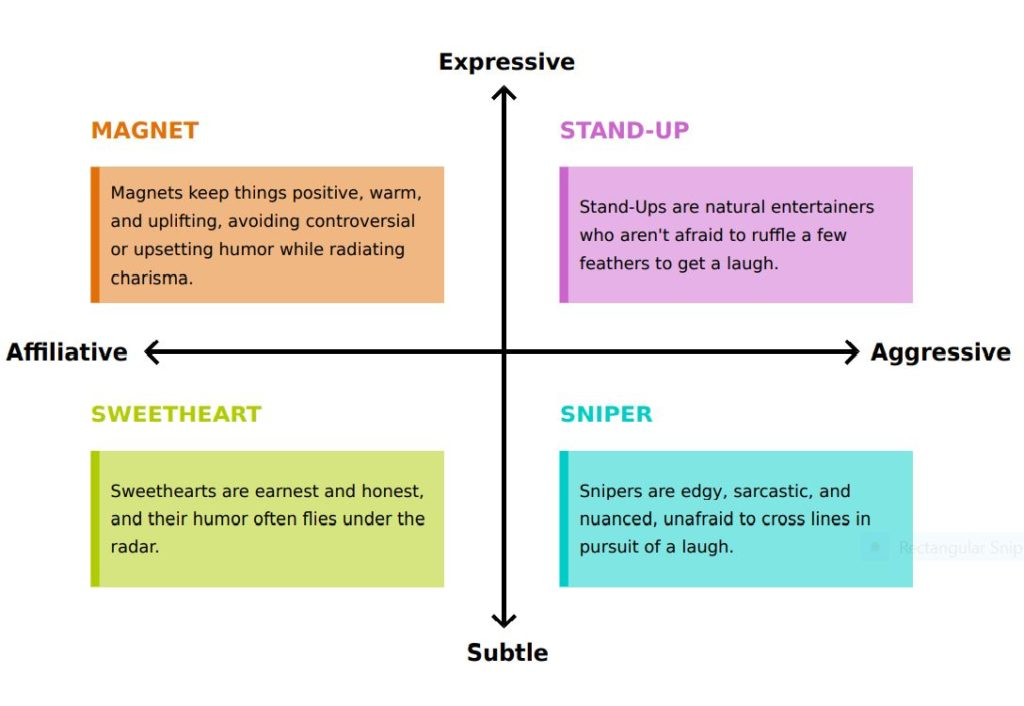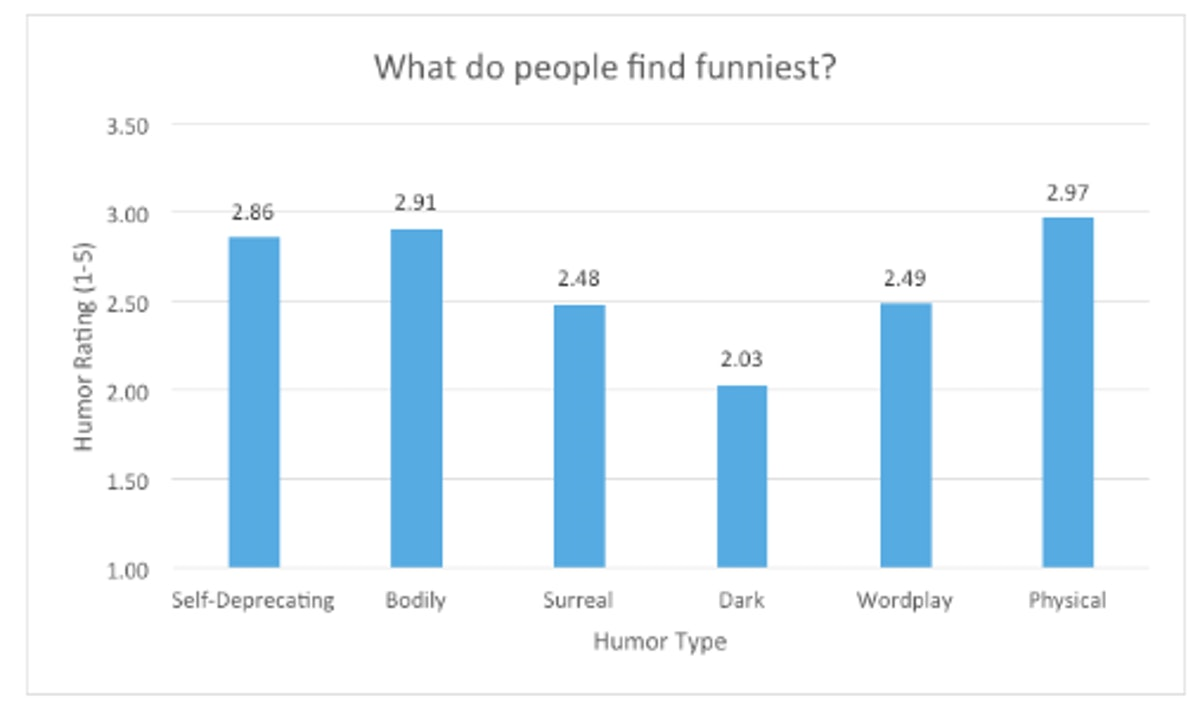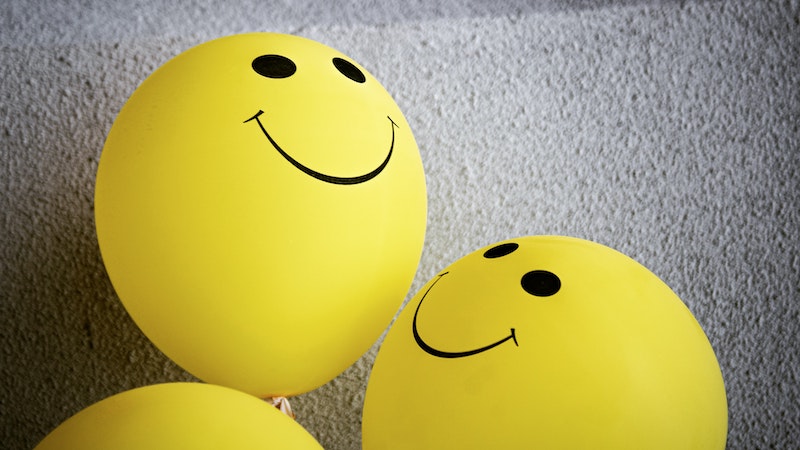What Is Humor?
Episode #1 of the course Humor: Science of how to be funny by David Urbansky
Welcome to the science of humor and how to be funny! Congratulations on starting this course! I am sure you will find lots of new and interesting ideas that you can use to brighten up your life and the life of the people around you.
Let’s get started! What do we even mean when we say “humor?” Humor is an umbrella term for three different concepts [1].
1. Sense of humor: the tendency of an individual to laugh or to amuse others
2. Comedy: a stimulus that triggers laughter (e.g., a joke)
3. Humor appreciation: a psychological state associated with laughter and amusement (e.g., the response to a joke)
The English term “humor” comes from the Latin word for “liquid.” Back in the old days, four bodily liquids (blood, phlegm, yellow bile, and black bile) were thought to control human emotions and moods. A specific imbalance of these liquids could cause problematic character qualities or make someone funny [2].
Personal Humor Styles
Science classifies humor styles along two axes:
1. Content: what someone likes to joke about
2. Delivery: how they like to deliver the joke [3]
Content can either be affiliative, meaning that someone likes wholesome and uplifting humor, or aggressive, meaning that someone is a fan of dark humor.
Delivery ranges from expressive (you seek the spotlight, use gestures, and tell a joke very animatedly) to subtle (you keep a straight face while telling a joke, which might be more nuanced and harder to get).
Researchers have charted these two axes and identified four humor styles:
1. The stand-up
2. The sweetheart
3. The magnet
4. The sniper
Pause here and find out which type you are by taking this quiz (please, note, it will ask for your email to see the results at the end).

[3]
Knowing your style of humor will give you some insight as to what your strengths are. If you’re a sniper, don’t force yourself on big crowds that don’t appreciate your wicked, dark sense of humor.
Humor Classification
As we age, our appreciation of humor becomes more sophisticated. While babies find “peek-a-boo” hilarious, stand-up comedians usually need a bit more to make an adult audience laugh.
Even for adults, the level of sophistication varies. A study from the online dating platform eHarmony [4] identified six types of humor:
1. Wordplay: Playing with ambiguities of words
2. Self-deprecating: Making fun of oneself
3. Bodily: Fart jokes
4. Surreal: Jokes about nonsense
5. Dark: Making fun of death or mishaps
6. Physical: Slapstick, banana peels, funny faces
The study’s goal was to match people with the same type of humor and see whether that had a positive effect on relationships. Spoiler alert: shared humor appreciation does matter for couples, but there will be more about that tomorrow.
Overall, people find physical humor funniest and dark humor least funny.

[4]
If you group people by their level of education, you can see some interesting trends:

[4]
It turns out that the smarter you are, the less likely you are to like physical or surreal humor and the more you may like wordplay. Interestingly, fart jokes (bodily humor) and self-deprecation seem to be funny regardless of education level.
When it comes to age, contrary to widely adopted (but false) belief, children do not laugh more than adults [5]. Studies are limited, but the few we have suggest that adults laugh more than kids. All age groups are 30 times more likely to laugh in social situations; adults laugh about 35 times per hour when around others [3].
In the coming days, you will learn why humor is so important. As you will see, it is a lot more than just being amused. We will then investigate why we laugh. There are a multitude of incomplete theories, but understanding them makes it easier for us to create our own humor. We will then spend three lessons on the humor toolkit: a set of practical techniques that help you understand and construct humor.
Once you have the tools, we will learn how to write a joke! Remembering jokes is another mystery that we’ll tackle. After so much learning, I want to surprise you with some fun facts about humor that will give you great conversation starters before we look at some final examples of how to employ and practice humor in your daily life.
At the end of the course, your appreciation for humor will increase tremendously and you’ll look at jokes, puns, and memes like never before!
See you in tomorrow’s lesson, where we’ll look into the great reasons you’re reading this course—the ones you probably didn’t even know about!
“The most wasted of all days is the one without laughter.” —E. E. Cummings
Recommended book
References
[1] What Makes Things Funny? An Integrative Review of the Antecedents of Laughter and Amusement
[3] Humor, Seriously
[4] eharmony.co.uk
[5] Do Children Laugh Much More Often than Adults Do?
Share with friends

